Siroeno Yosui is a bespoke shoemaker from Japan but it is not a real shoemaker, I mean it is not a person, but a team. The team is made up of two people. There are two significant things about Siroeno Yosui, one is their YouTube channel, which captures the complete handcrafted process of how a pair of shoes is made from start to finish. The other is that they were the runner-up in the 2022 World Shoemaking Championship.
These shoes were ordered in June 2022, and soon the test foot shoes arrived. After trying and gave some feedback it was not until yesterday that the shoes were received. I think the product gives a very premium experience!
Let us check them out.
Unboxing
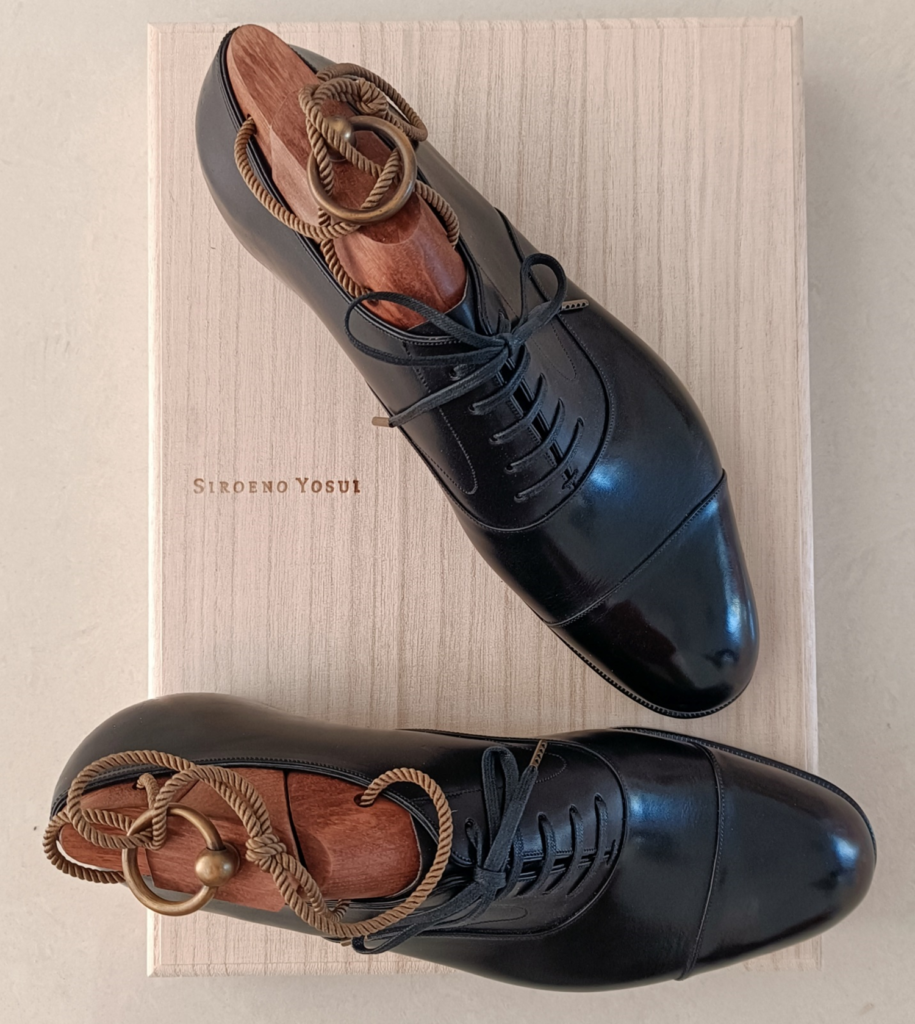
I would love to do a good job of unboxing, but the wooden shoe box has been broken, only this cover is still complete. Take a picture to remember it.
Last
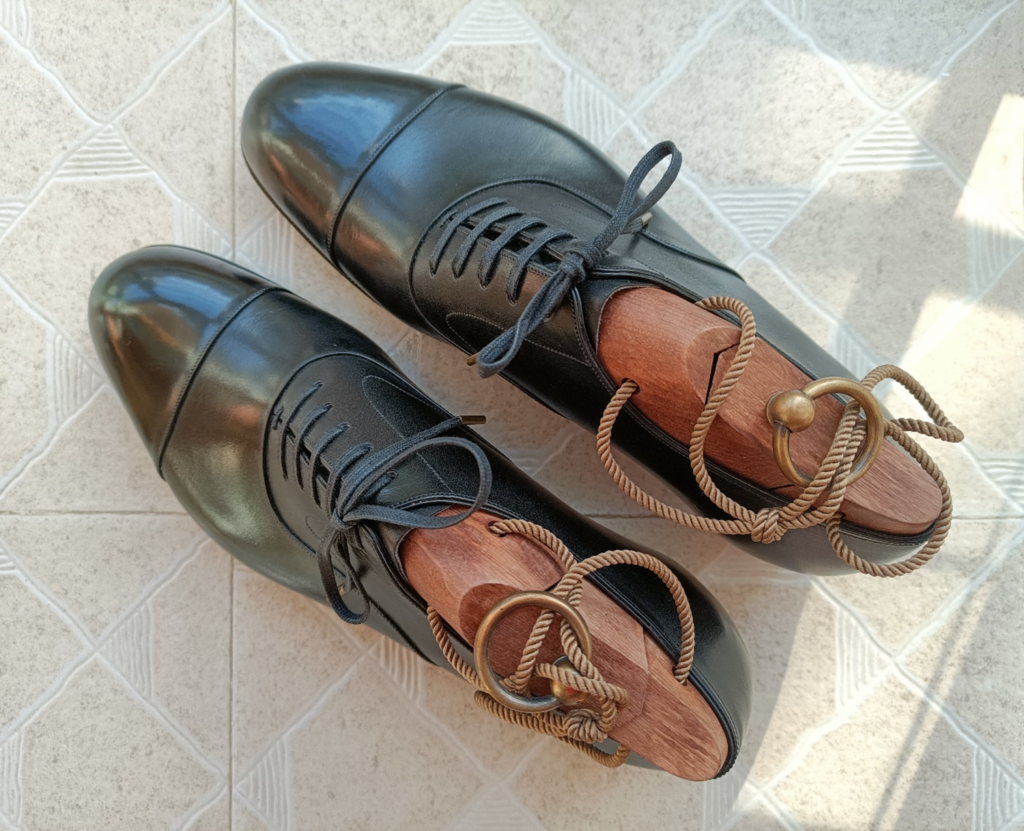
I would name this last as Japanese-English last. I tried to interview the two craftsmen, but they did not respond. From the information I gathered, it seems that the two do not have a background of overseas study. It is not that I think those who have overseas experience are necessarily more powerful, but aesthetically, the influence of England, or Italy, may be more obvious. Siroeno Yosui’s last is Japanese at first glance. The proportion is appropriate, and the toe is traditional, but with a hidden agressiveness.
The last of bespoke or handmade shoes is different with the factory mass-produced shoes, that is it assembles foot more precisely. One English word has the most clearest description, Sculptural. To be more specific, it may be better to understand that the outer forefoot is flatter. Because our feet are more arched on the inside and flatter on the outside. From the aesthetic point of view, the lasts of mass-produced shoes, such as Edward Green’s 202, Crockett & Jones’s 236, Corthay’s Pullman, Berluti’s Demesure, are all very good-looking, and those of top bespoke shoes are also good-looking, both of which, I think, may have a difference in production process – lasting. The former can be likened to a silhouette, while the latter is of course a more customized garment that fits and flatters your figure. So you see, it’s not about which one looks better, but about achieving an overall consistent contextual expression with your outfit.

The heel, which is no longer just asymmetrical, has almost taken the form of a tear. You can say that the narrowing of the heel at the ankle has become insane. When I unwrapped the Cavendish 2 from Crockett & Jones, the loafer with tassels, I mentioned that the Cavendish has 3 generations and the third generation sits on the last 375, which is launched specifically for the Asian market (more specifically, the Japanese market), the only difference is a smaller heel. Since the heel of the Asians is smaller, it can be fully optimized, and the shoe is also more exquisite.
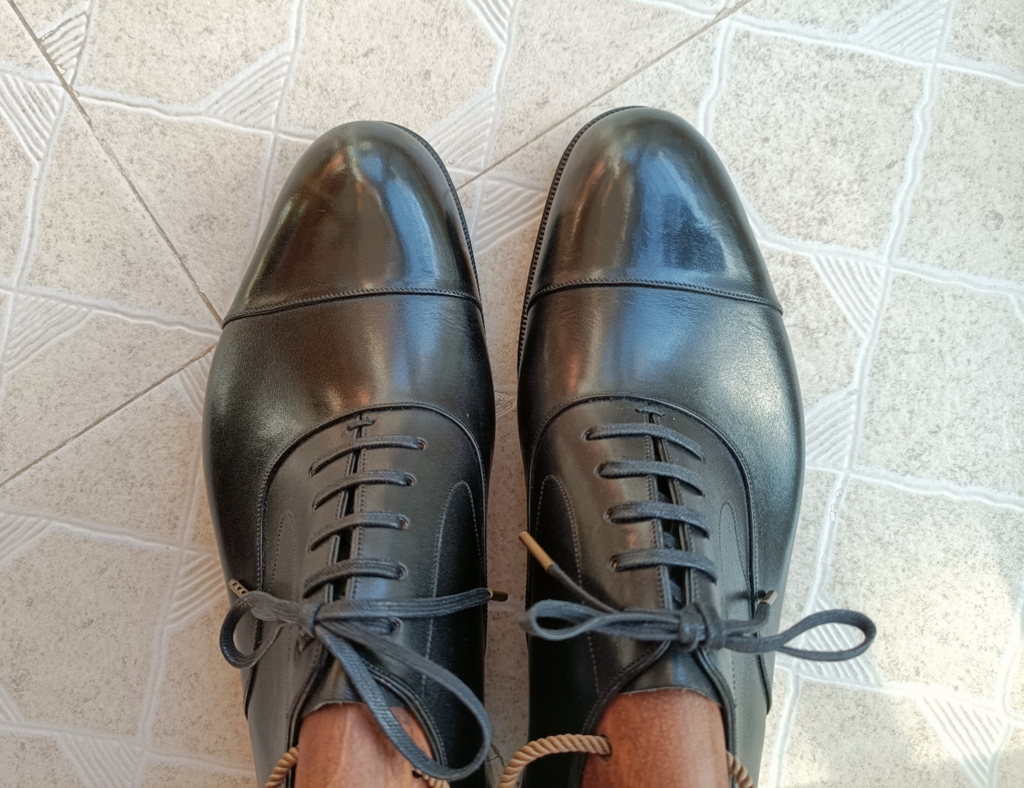
This pair is Made To Measure, this angle tells obviously that the left pair is wider. My left foot is wider and shorter than my right foot, and right foot has a higher instep.
When seen together, different size or shape of two beams there is a sense of disharmony. But if you take it out separately, would you feel the discord? I don’t think so, we will feel that the person’s foot is a little wide (in fact, it is the corns of my left foot pinky top out, hey, to say more are tears), but the aesthetics of the shoe last is marvelous.
Pattern
My choice is always the most boring shoe you can imagine.
Outsole
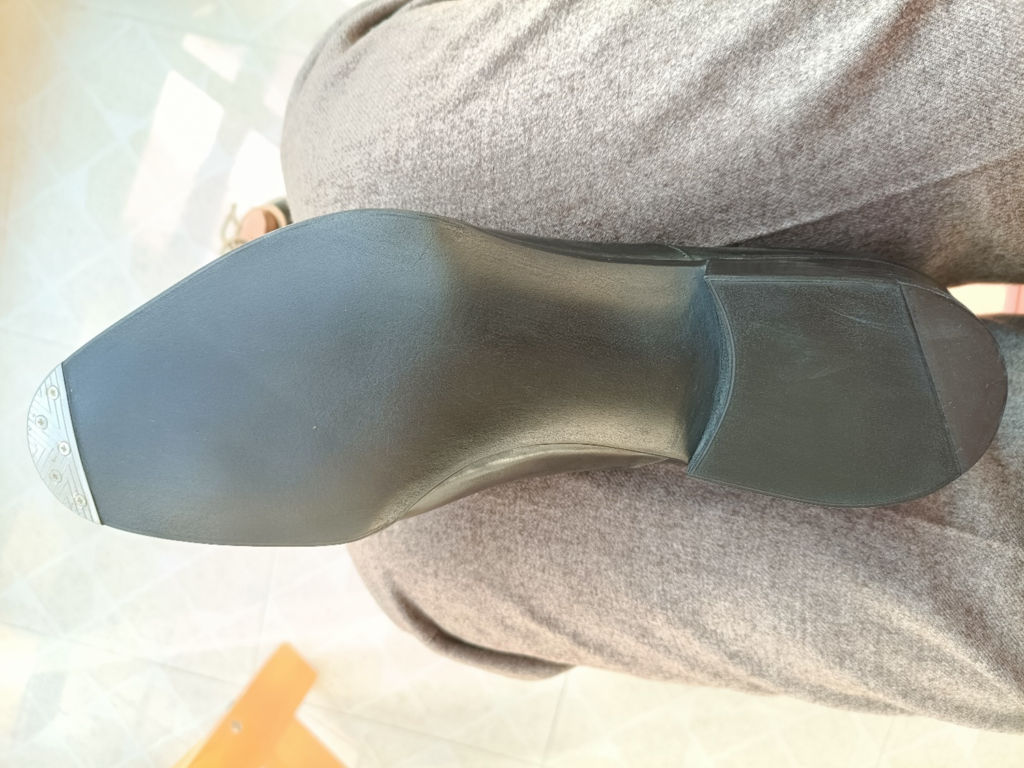
This waist is the orthodox taste. The curvature is what I like, but the waist can be a little wider, current width of waist seems too showy in my opinion. The finishing of the sole is unique with frosted texture. Fukuda Yohei’s shoes’ sole is also black but very translucent which should be dyed and waxed.
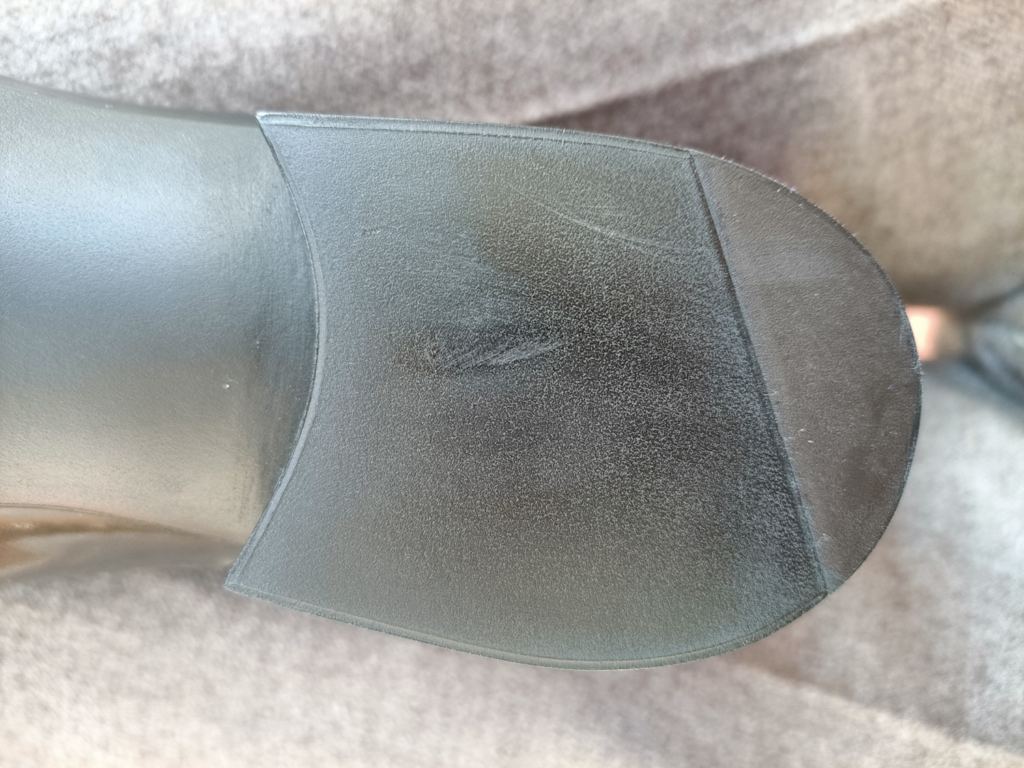
Not that the product is so flawless, such as the rubber sheet and leather bottom are not at a same height which should be sanded more thoroughly.
Construction
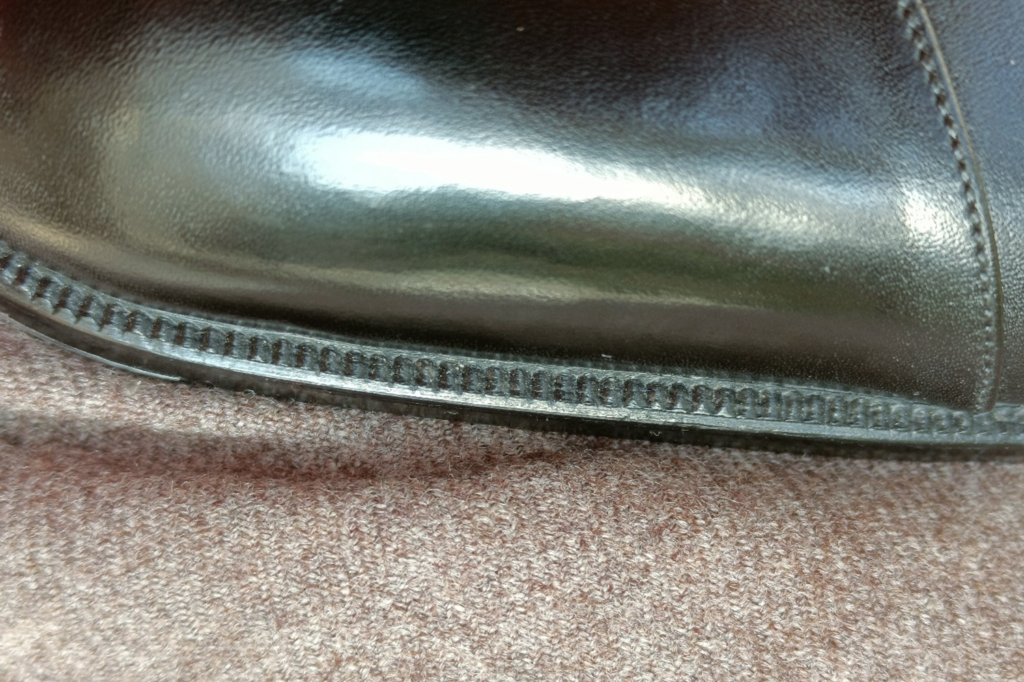
Very fine work on welt, you can see the stitches pressed on the fudged teeth, wax to cover the stitches is not thick.
Three parameters must be in harmony with each other, which are width of welt, stitch density and sole thickness.
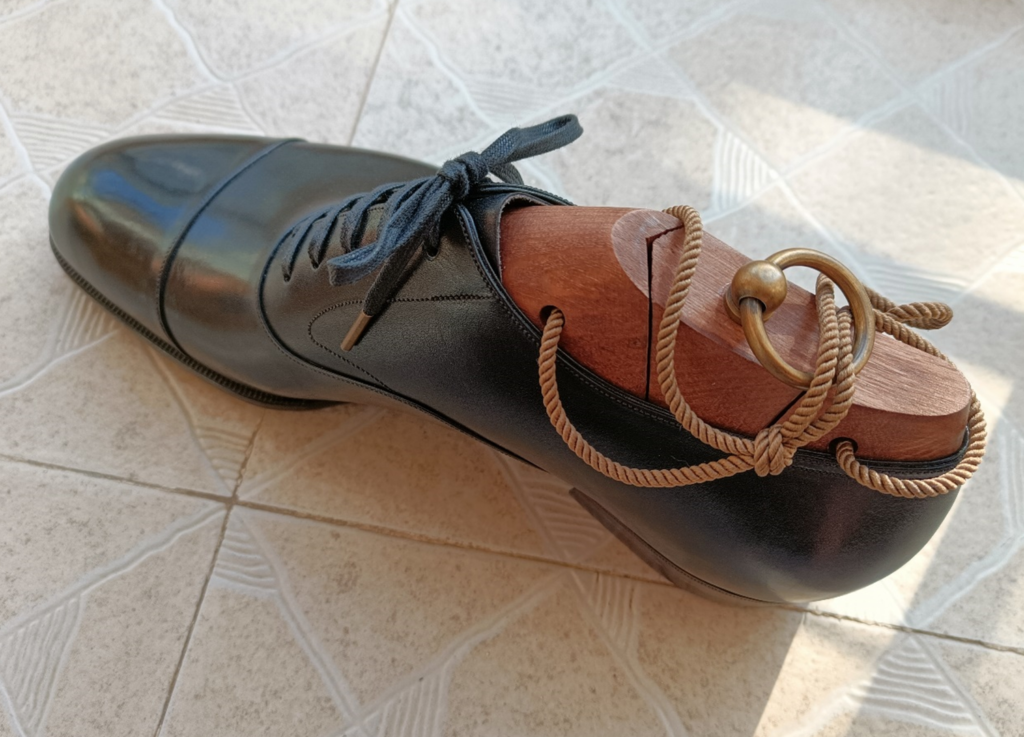
Sole waist is invisible. The transition from forefoot to waist needs to be tender and not too prominent.

The outer side of waist has the broken heel element and blind waist.
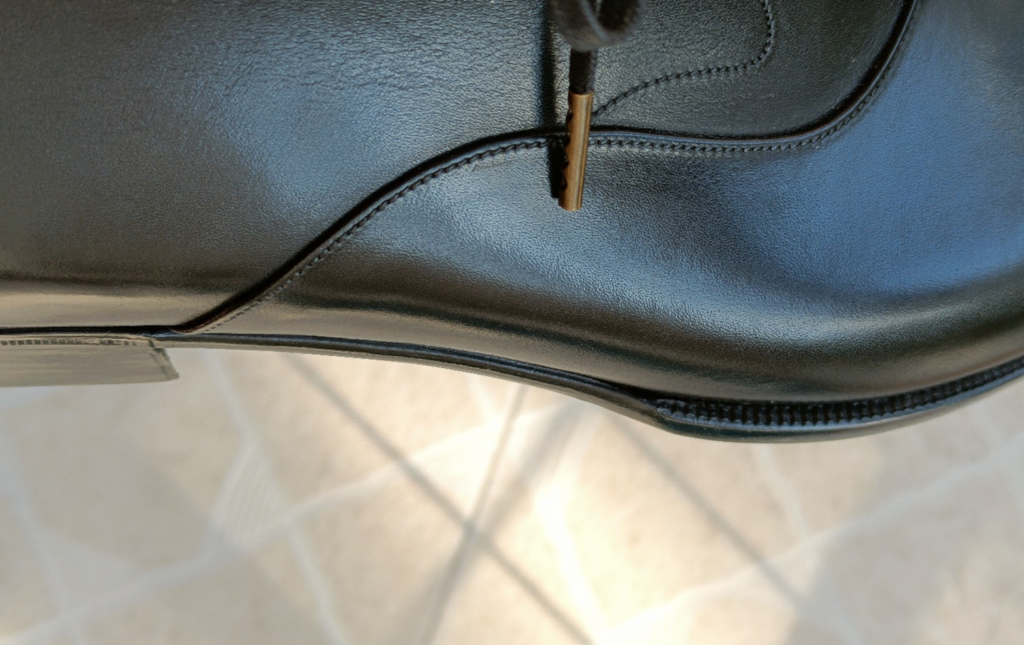
If you look at traditional British bespoke shoes, you will see that the outside of waist is not napped.
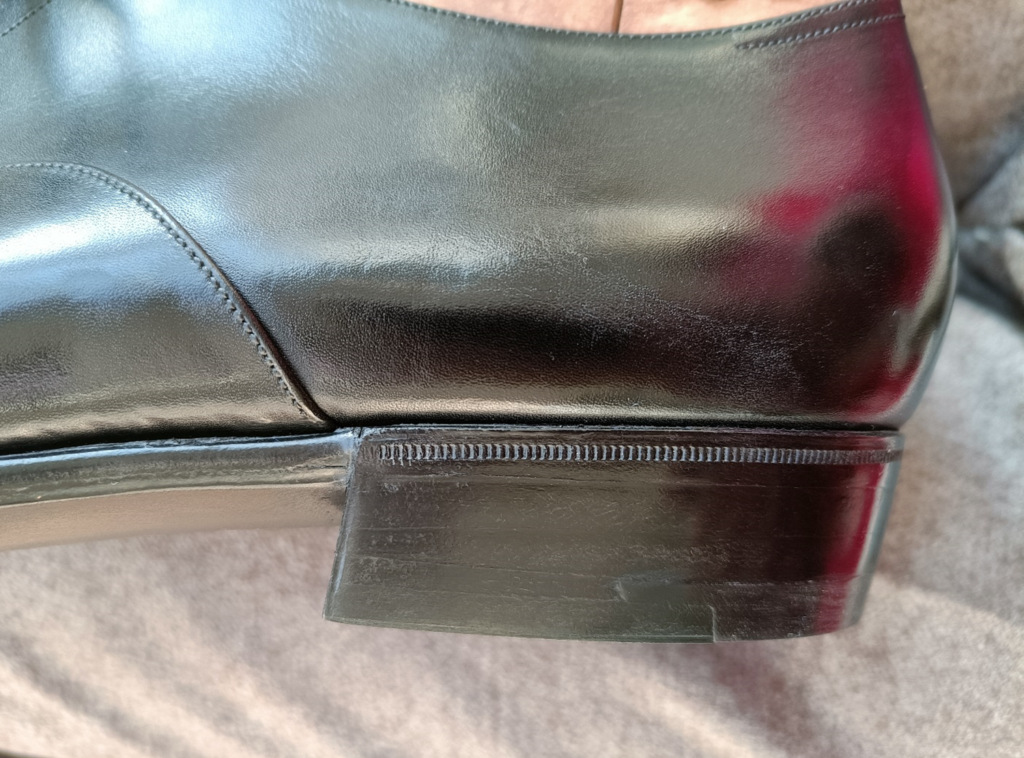
The heel is delicately knurled, together with the Cuban heel, which places more emphasis on the parallelism between the front end and the back end.
Lasted Shoe Tree
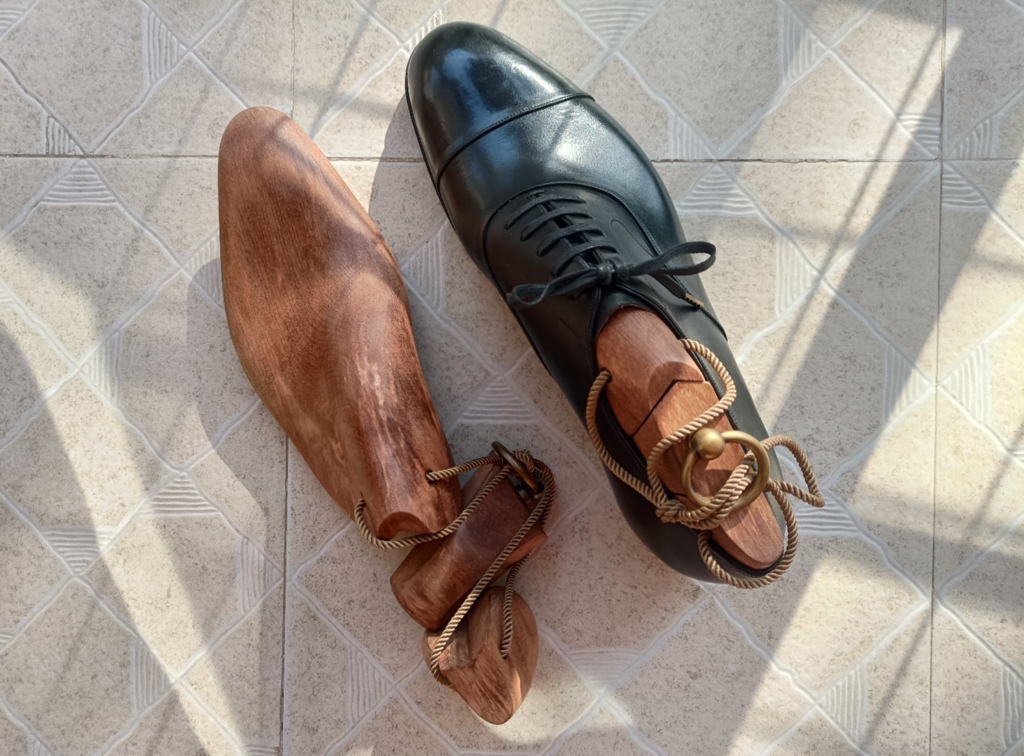
I believe everyone loves three-section shoetree, they feel superb, rare and valuable. The wood texture of Siroeno Yosui is also very antique and sophisticated. The only problem is removing the shoe tree needs a lot of effort!
Details

The logo on sock lining is very minimalist and modern yet seems to fit in with this traditional category terrifically.
Summary

As I said in the introduction, the product gives me a very high-class experience, not about the brand, not about which country shoemaker.

